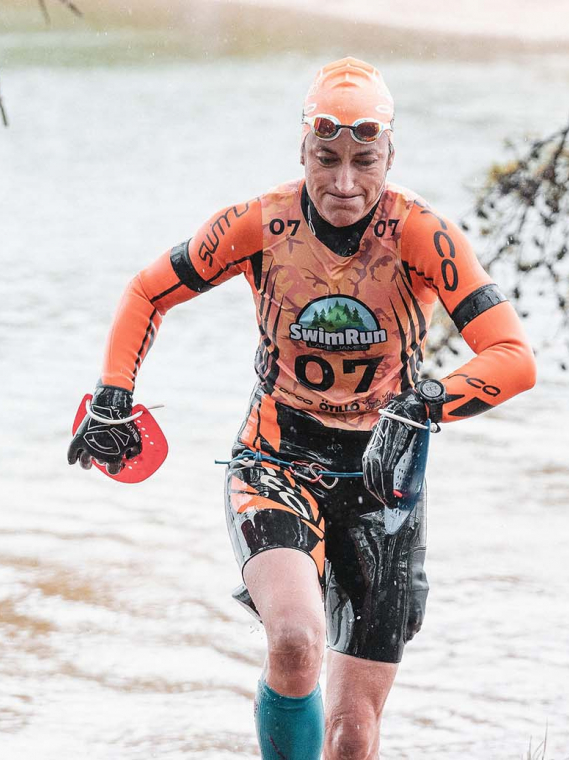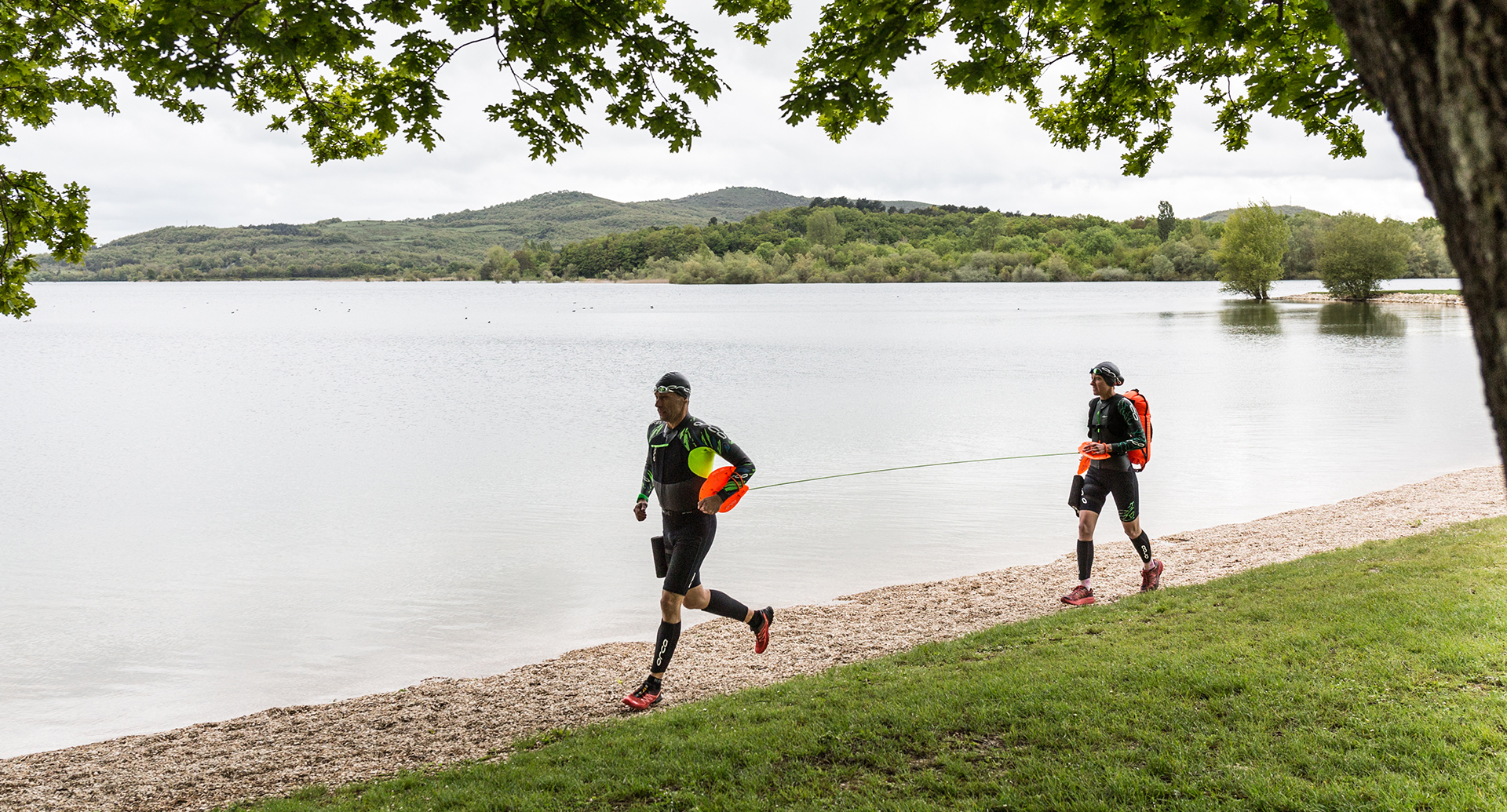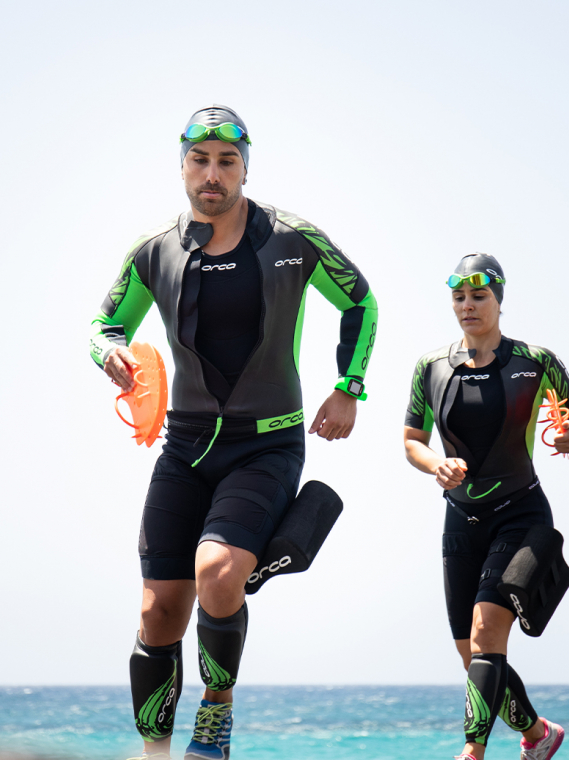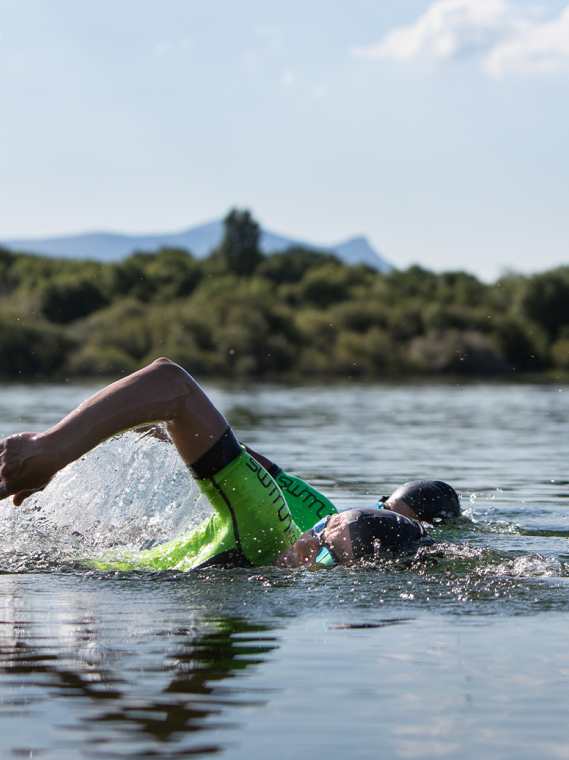
SWIMRUN SERIES| Equipment | Swim Paddles
Swimrun
August 14, 2018
Orca is back with more on Swimrun, which we have been focusing on for the last few weeks. This time we will be discussing equipment and one of the ite...
Transitions are an essential part of a Swimrun race. Just as it is so important to train for T1 and T2 transitions in a triathlon, in a Swimrun race...

Today at Orca we will be covering what may be one of the most important parts of the race: transitions in and out of the water.
Transitions are an essential part of a Swimrun race. Just as it is so important to train for T1 and T2 transitions in a triathlon, in a Swimrun race where there are multiple transitions and you will face different conditions with each, training in this area is crucial to ensure that you don't spend too much time on them.
You have to keep in mind that the conditions you face during transitions will be highly variable, not just from one race to another, but they can also differ from one transition to the next within a race, and these conditions can change due to the weather, so it is important to be very prepared for whatever is coming around the corner.
In the video of “How to Train for Transitions,” we will explain how to practice water entrances and exits in more detail, but here we will give you some tips on how to tackle transitions on the day of the race.
TIP 1 | Go over the Various Entrances and Exits That You Will Have to Navigate
This can be complicated if the race takes place far away from your home and you are not familiar with the environment, or if on the other hand you have to travel on short notice, such as the day before, or even worse, the day of the event.
If this is the case for you, this video will give you some tips for handling transitions better, but if possible, we recommend scouting out the area in which the race will take place beforehand.
Review what transitions you will have to go through: look to see where the water exits and entrances are and what type of terrain you will be on. For example, check whether the entrances and exits are smooth or if there are abrupt changes that involve jumping, crawling or some type of climbing, because you will be using different techniques for each as you can see in the video “How to Train for Transitions,”.”
Also, figure out what type of terrain you will be on, especially in the transition area (sand, gravel, bushes, stone...) and whether that terrain will remain stable in different weather conditions, as climbing up or down a dry rock will be very different from a wet one, as these can be extremely slippery.
If you are not able to review the location in person, we recommend that you take a moment to sit in front of the computer and check race route in “satellite” mode on Google Maps or Google Earth, which can help you assess the type of terrain you will be dealing with. However, you'll have to pay attention on the day of the race because the plant life can vary and this can alter the circumstances of your transition.
TIP 2 | Consider the Distances You'll Have to Cover during Each Segment
It may seem very basic, but knowing the distances of the transitions that you will have to go through throughout the race can be very helpful when it comes to tackling each segment successfully.
Although it may seem somewhat silly, take note of the distances you will have to cover, for example, a 500 meter swim, a 1k run, a 200 meter swim... and so on and try to plan for how to take on each one of these segments.
When it comes to the swimming segments, ask yourself if you will have enough time to put on/take off the accessories that you will be carrying with you such as swim paddles or a pull buoy (if you decide to take these with you as explained in our videos on equipment) or if it might be worth it to put on or take off some of the neoprene accessories you will wear such as neoprene caps, etc.
If the segment is a foot race, it is important to assess the weather and the distances you will be covering in each case to determine whether or not it is worth “getting rid” of items that may hold you back during the race such as, for example, whether or not you should take off your wetsuit or some accessories that keep you warm.
Keep in mind that if the transitions are very short, it might not be worth using some support materials that you carry with you or you should use them differently than you usually do, but if the transition is going to be long anyway, it might be worth the "loss" of time in order to be properly prepared and make sure that nothing will weigh or slow you down.
Try to memorize these distances and go over your plan with your partner constantly in order not to make any avoidable mistakes.
TIP 3 | Think About What Equipment You Will Be Bringing with You and How It Will Affect Your Transitions
Finally, it is in your best interest to go over everything with your partner and to practice transitions properly with all the equipment you will be using on the day of the race so that you can determine how this will affect your movements.
In addition to thinking about how you will be able to perform with the support materials that you bring with you such as swim paddles or a pull buoy, there is one other tool that we often forget about which can play a fundamental role when it comes to going through transitions, and that is a bungee cord.
This is a rope connecting you to your partner. It plays a crucial role in entrances and exits, and it can play tricks on you if you don't manage it correctly. It is important that you be careful during these times so as not to get it caught on other participants and/or plant life, and this is why you can establish roles for yourself and your partner where one is a "lookout" and makes sure that the route you chose is the right one, and who can warn the other if they see any type of danger or obstacle.
Finally, if you two are going to be separated at any point during the race, it is important to determine who is going to carry the bungee cord in order to prevent it from getting lost.
You can watch our swimrunners talk about their experiences with this in the video below. Don't forget to subscribe to our YouTube channel if you want to learn more and follow us on our social networks for all the latest Orca news!

August 14, 2018
Orca is back with more on Swimrun, which we have been focusing on for the last few weeks. This time we will be discussing equipment and one of the ite...

July 24, 2018
As we mentioned in our first post, most swimrunners come from triathlon, where their biggest handicap is usually the cycling portion. Our athletes tal...

July 19, 2018
Swimrun, as we mentioned in our last post and as our swimrunners tell us in the video below, is a race format that may resemble aquathlon, but that ha...